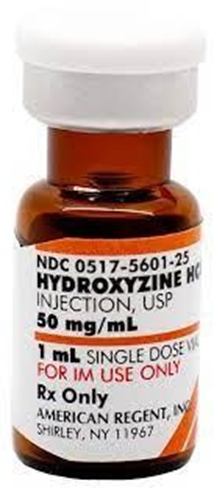A nurse is collecting data from a client following a bee sting. Which of the following findings can indicate an anaphylactic reaction to the venom?
Nausea and vomiting
Generalized edema
Bradycardia
Urticaria
The Correct Answer is B
A. Common allergic reactions but not specific to anaphylaxis.
B. Can be a sign of anaphylaxis, reflecting a systemic allergic response.
C. Anaphylaxis is more commonly associated with tachycardia.
D. Hives are a common allergic reaction and can occur in anaphylaxis, but they are not specific to it.
Nursing Test Bank
Naxlex Comprehensive Predictor Exams
Related Questions
Correct Answer is ["10"]
Explanation
To answer this question, we need to use the formula:
mL = (dose ordered / dose available) x mL available
Plugging in the values from the question, we get:
mL = (50 mg / 25 mg) x 5 mL
mL = 2 x 5 mL
mL = 10 mL
Therefore, the nurse should administer 10 mL of hydroxyzine oral suspension.

Correct Answer is ["2"]
Explanation
To calculate the number of tablets, the nurse should divide the prescribed dose by the available dose. In this case, 0.2 mg / 0.1 mg = 2 tablets. Therefore, the nurse should administer 2 tablets of clonidine.
Whether you are a student looking to ace your exams or a practicing nurse seeking to enhance your expertise , our nursing education contents will empower you with the confidence and competence to make a difference in the lives of patients and become a respected leader in the healthcare field.
Visit Naxlex, invest in your future and unlock endless possibilities with our unparalleled nursing education contents today
Report Wrong Answer on the Current Question
Do you disagree with the answer? If yes, what is your expected answer? Explain.
Kindly be descriptive with the issue you are facing.
